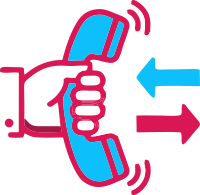Implementation of eInvoicing system was authorized by the GST Council in September 2019. As a result, the new compliance reform made its entry in India after successful implementation in over 100 countries globally.
The primary purpose of this reform is to make the tax return process easy. But the reform does come with its share of challenges.
Understanding eInvoicing Applicability in India
eInvoicing applicability was first limited to businesses with a turnover exceeding Rs. 500 crores. However, the applicability gradually extended to more and more businesses. As per the recent notification, businesses with annual turnover exceeding Rs. 5 crores must generate eInvoices. The government is likely to extend eInvoicing applicability for all businesses from the next financial year. In the next phase, it may be extend to B2C transactions as well.
1. Invoice Cancellation and Amendments
Cancelling or making amendments to eInvoices is a major challenge that businesses face. The system does not allow partial cancellation. Additionally, eInvoices can only be cancelled within 24 hours of generation from the IRP. After that, the eInvoice can be cancelled on the GST portal.
Additionally, it is essential to revise the invoice number because a new eInvoice cannot be generated with the previous invoice number. Therefore, after revising the invoice number you need to raise the new invoice on IRP.
2. Training for Employees and Staff
Because eInvoicing is a digital process, making the staff understand it fully can be a challenge for business. This increases the need for training and educating the staff to ensure the process is understood. If the training is not done properly, mistakes can happen in the eInvoicing process.
3. Bifurcating B2B & B2C Invoices
Bifurcating invoices can take a lot of time and effort. Since eInvoicing applies only to B2B invoices. They require a GST e-way bill and eInvoice. For B2C invoices only e-way bill generation is require. Sorting the B2B and B2C invoices can be a challenge. For Bifurcating these invoices automation is must have to save valuable time and effort.
4. Need for Alternative Solutions for Archiving Data
The data remains on the IRP for only 24 hours. The portal does not provide archiving of data facility at the moment. Therefore, businesses are require to make an alternate arrangement for archiving data.
5. Need to Create Separate Workflows
As mentioned earlier, the provision of eInvoicing applies only to B2B or export invoices. Therefore, eInvoicing applicability increases the need to have separate workflows in place for other transactions such as delivery challans, job work and other related transactions. Creating separate workflows for different transactions requires a lot of time and effort.
6. Integration with Existing ERP System
Integration of the eInvoice system with the existing ERP can be a challenge for businesses. For a smooth eInvoice data flow, the existing ERP system must be integrate with the GST Suvidha Provider (GSP) or Invoice Registration Portal (IRP).
With TaxPro’s eInvoicing solutions, the switch to eInvoicing is guarantee to be smooth and easy. Our comprehensive eInvoicing system ensures seamless integration with your current ERPs.
The introduction of eInvoicing has brought several changes in the invoicing process for businesses. These changes bring significant challenges as well. Choosing appropriate solutions and staying updated with eInvoice Latest News can help overcome these concerns, ensure compliance and help increase accuracy.

